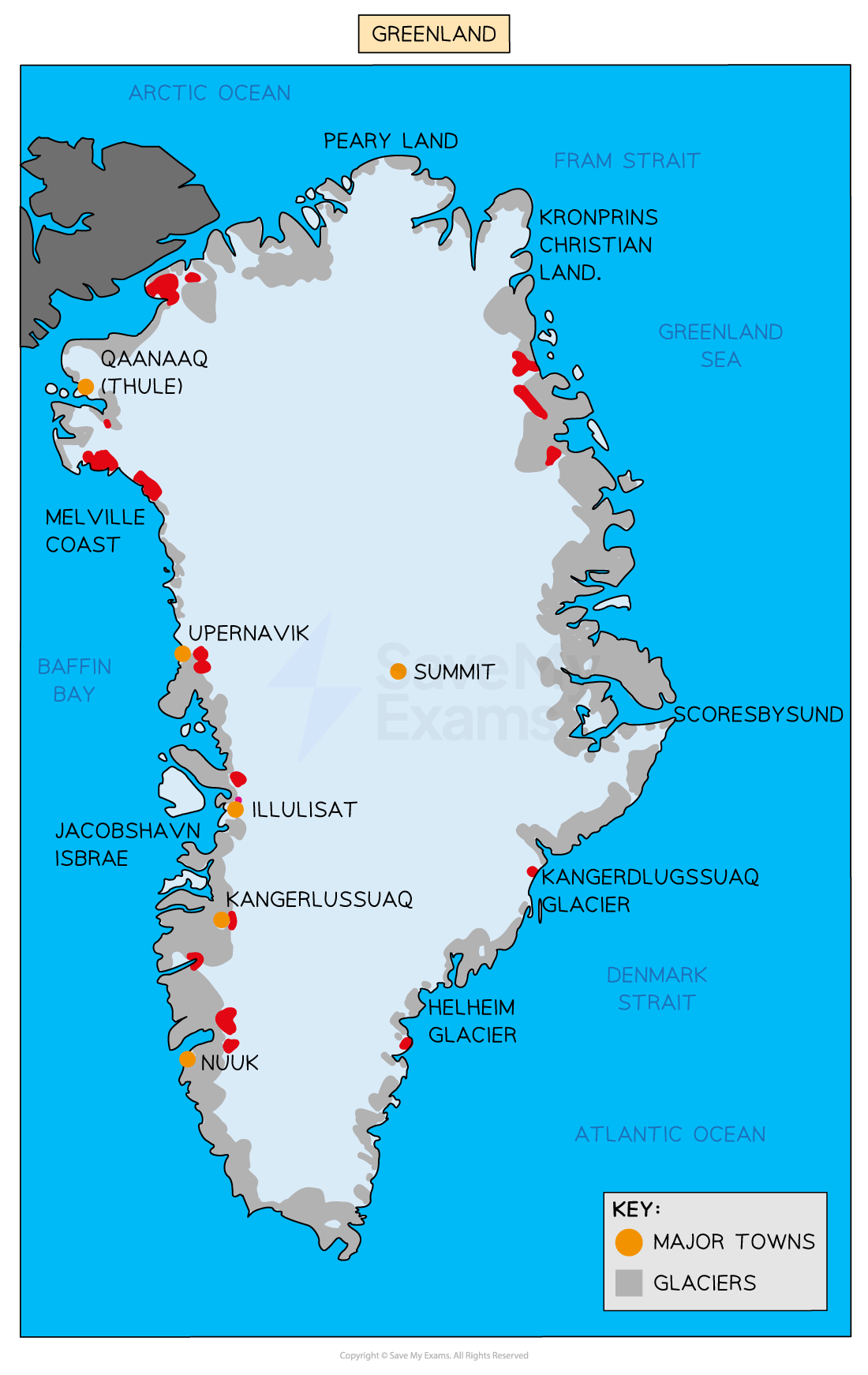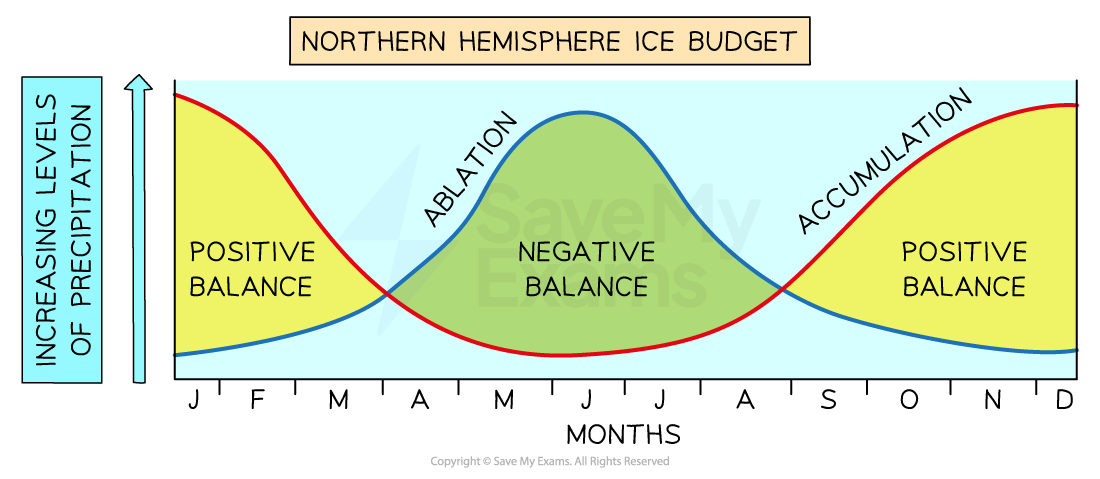Mass Balance System
Formation of ice
- Glaciers are defined as:
Large rivers (mass) of ice, moving downhill, under the influence of gravity
- Glaciers are open systems with direct inputs of snow and ice from precipitation, blown in on the wind or with avalanches
- Over 2 years, snow and ice settle and compact to form firn or névé
- Each subsequent snowfall adds to these layers and further compacts the firn into glacial ice
- Compaction squeezes air out of the firn, and the resulting glacial ice absorbs longwave light but scatters short-waved blue light, making the ice appear blue
- The formation of glacial ice usually takes approximately 30 years, but in polar areas, such as Greenland, it can take up to 150 years
- In temperate regions, transformation to ice takes as little as 100 years
-
However, in places such as Antarctica, ice has taken up to 4000 years to form; due, in part, to the lack of precipitation, which slows down the rate of compaction into ice
Glaciers as a system
- Glaciers are open systems with inputs and outputs to external systems, including fluvial and atmospheric systems
- There are flows of energy, ice, water and sediments between stores

Mass balance
-
- Mass balance is the gains and losses of ice within the glacier
- More accumulation over a year and the glacier has a positive regime or positive mass balance
- The glacier will gain mass and advance in response to high accumulation in the upper zone
- A negative mass balance or regime is when there is less accumulation than ablation (usually during the summer months)
- The glacier will lose mass and retreat in response to low accumulation in the upper zone
- Dynamic equilibrium is when the overall amount of ablation and accumulation balances over a year
- The glacier remains the same size and the position of the glacier front does not change




